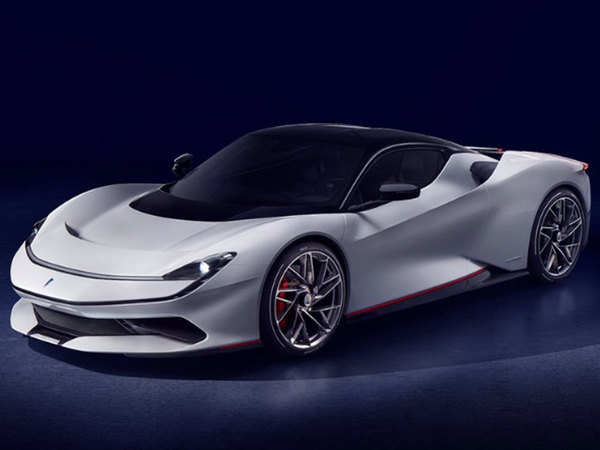The design of automobiles has undergone a remarkable transformation over the past century, evolving from the elegant, handcrafted vehicles of the early 20th century to the sleek, aerodynamic machines of today. This journey reflects not just changes in aesthetics, but also advancements in technology, materials, and manufacturing processes. In this article, we explore the evolution of car design, tracing its roots from classic models to the cutting-edge designs that define modern automotive styling.

The Early Days: Craftsmanship and Elegance
In the early 1900s, cars were a symbol of luxury and innovation. These early vehicles, such as the Ford Model T and Rolls-Royce Silver Ghost, were often handcrafted, with designs that emphasized elegance and detail. The primary focus was on creating vehicles that reflected the status and wealth of their owners.
Classic Car Design Elements
Classic car design was characterized by long, sweeping lines, intricate details, and the extensive use of materials like wood and leather. The exterior design often featured rounded edges and a distinct lack of sharp angles, giving these vehicles a smooth, flowing appearance. Chrome accents, large, exposed grilles, and prominent headlamps were common features that defined the classic era of automotive design.
The Role of Art Deco
The Art Deco movement of the 1920s and 1930s had a significant impact on car design. Vehicles from this period, such as the 1936 Auburn 852 and the Chrysler Airflow, showcased bold, geometric shapes, streamlined forms, and a sense of modernity that was ahead of its time. The influence of Art Deco can still be seen in certain elements of modern car design, particularly in luxury vehicles.
The Mid-20th Century: Function Meets Form
As the automotive industry matured, the focus of car design began to shift from pure aesthetics to a blend of form and function. The mid-20th century saw the rise of mass production, which brought about changes in how cars were designed and built. Designers started to prioritize aerodynamics, safety, and efficiency, leading to a new era of car design.
The Streamlining Revolution
The 1950s and 1960s were marked by the streamlining revolution, where car designs became more aerodynamic to improve performance and fuel efficiency. The iconic Chevrolet Corvette and the Ford Thunderbird are prime examples of this trend, featuring sleek, low-profile bodies and smooth, curved surfaces that reduced drag and enhanced speed.
The Muscle Car Era
The 1960s and 1970s introduced the world to muscle cars—powerful, high-performance vehicles with aggressive designs. Cars like the Ford Mustang, Dodge Charger, and Chevrolet Camaro became symbols of American automotive culture. These vehicles featured bold lines, wide stances, and large engines, reflecting a design philosophy that emphasized power and performance.
The Late 20th Century: Embracing Technology
By the late 20th century, technology began to play a more significant role in car design. Computers allowed for more precise engineering, while new materials like fiberglass and aluminum opened up possibilities for innovative shapes and lighter structures.
The Rise of Compact and Subcompact Cars
The oil crisis of the 1970s and increasing environmental concerns led to a demand for smaller, more fuel-efficient vehicles. This era saw the introduction of compact and subcompact cars, such as the Volkswagen Golf and Honda Civic, which prioritized practicality and economy over luxury and performance. The design of these cars was functional, with a focus on maximizing interior space and minimizing weight.
The Influence of Japanese Design
Japanese automakers like Toyota, Honda, and Nissan revolutionized car design in the late 20th century by introducing vehicles that combined reliability with innovative design features. The 1980s and 1990s saw the rise of the Toyota Corolla and the Nissan 300ZX, which showcased a blend of efficiency, technology, and modern styling that appealed to a global audience.
The 21st Century: Modern and Futuristic Designs
In the 21st century, car design has become more diverse and technologically advanced than ever before. Today’s vehicles are designed with a focus on sustainability, safety, and connectivity, reflecting the changing priorities of consumers and the industry.
Electric and Autonomous Vehicles
The push towards sustainability has given rise to electric vehicles (EVs) like the Tesla Model S and Nissan Leaf, which feature sleek, minimalist designs that emphasize efficiency and environmental consciousness. Autonomous vehicles, still in the early stages of development, are also influencing car design, with a focus on creating interiors that cater to passenger comfort and entertainment rather than just driving.
The Return of Luxury and Customization
Luxury car brands have embraced modern technology while maintaining their commitment to high-end design. Vehicles like the Mercedes-Benz S-Class and the Bentley Continental GT combine cutting-edge technology with bespoke design elements, offering a personalized driving experience. Customization options have also expanded, allowing consumers to choose from a wide range of materials, colors, and features to create a car that reflects their individual style.
Conclusion
The evolution of car design from classic to modern reflects the broader changes in society, technology, and consumer preferences. From the handcrafted elegance of early automobiles to the futuristic designs of electric and autonomous vehicles, car design has continually adapted to meet the needs and desires of drivers. As we look to the future, the possibilities for car design are endless, with advancements in technology promising even more innovative and exciting developments.

